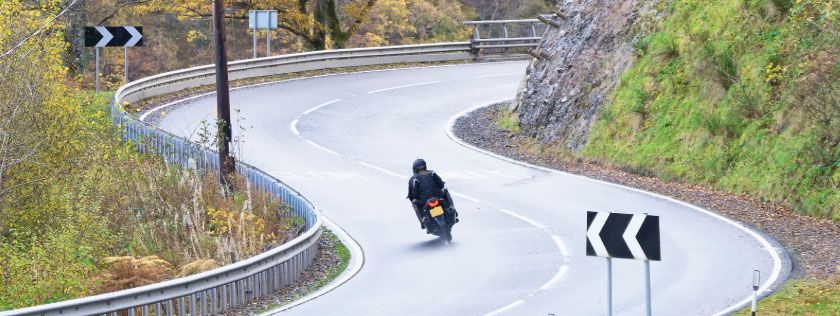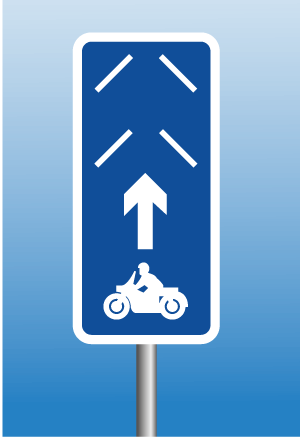PRIME road markings proven to save bikers’ lives

This week our social media feeds and email inboxes will have been bombarded with hearing that Prime day is just around the corner.
But the PRIME we’re talking about has absolutely nothing to do with that great big online retailer…
Road markings, known as Perceptual Rider Information for Maximising Expertise and Enjoyment (PRIMEs), have been trialled on Scottish roads for the last three years at 22 sites in the west of Scotland.
Earlier this month it was revealed that the scheme designed to improve safety for motorcyclists, particularly on left-hand corners, has been a success. The PRIME road markings assist in funnelling bikers into a position to help them avoid drifting wide and nearer the centre line.
As a personal injury solicitor who specialises in motorcycle accident claims, the news that the / \ type markings have been shown to help reduce the number of motorcycle accidents is welcome.
So what improvements have been made? And will this initiative be rolled out further?
A PRIME example of why road safety matters
“A significant reduction in speed.”
“A significant improvement in braking behaviour.”
“A significant improvement in road position both on the approach and apex of the bend.”
These are the impressive changes to rider behaviour that have come from the trial involving more than 32,000 motorcyclists.
But perhaps most importantly, the Road Safety Trust and Transport Scotland are reporting that since the start of the trial nearly three years ago there have been no motorbike crashes at PRIME sites.
With bikers being vulnerable road users, and 2022 Transport Scotland statistics showing they accounted for 14% of all road deaths in Scotland, such possible improvements in road safety must be welcomed.
The gateway-type markings and accompanying road signage seem to be helping riders adapt to conditions on the road and encourages the riding position set out in the Motorcycle Roadcraft manual. Any rider approaching a left-hand bend should adopt the correct speed and stay within the limits of their abilities.
Visibility is often restricted due to the nature of the left-hand bend – notoriously the most problematic corners for motorcycle riders - and until you’re beginning to approach the apex of the bend you may have a narrowing field of vision.
The new markings help make sure riders don’t drift towards the centre line, enabling them to be prepared to respond to hazards as they round the bend in a more effective road position.
Primed for a safer future
The sites where the markings have been trialled were specifically chosen for their demanding technical complexities – adverse or offset cambers, sheltered and damp surfaces, lighting conditions or nearby street furniture/walls etc.
The blue road signs show a motorcycle and a directional arrow, with short slanting lines above that, showing that the rider should ‘thread the needle’ – or ride in the gap between the white lines painted on the road surface.
Collected video footage from the trial shows that without any explicit instructions beyond the signage and road marking, riders were modifying their behaviours. This seems to show the PRIME markings are crucial in helping riders (even experienced ones) judge their approach speed, position and braking – including in group rides and with pillions.
This has been the biggest research scheme of its type in Scotland and given the results, it is not surprising that guidance is now being delivered to road authorities across the country to help them roll out PRIMEs locally.
PRIME markings therefore literally save lives – how can we not welcome this across the rest of the country?
An example of this month’s news coverage of the PRIME scheme can be seen here.
Lianda Barnes, Partner and Head of our Motorcycle Law team

